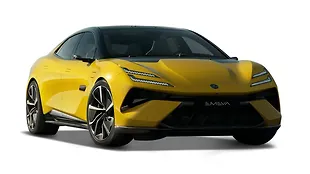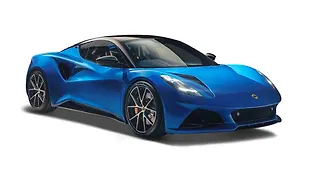Introduction

A dozen years ago, the Indian car market didn’t have the choices it does today. The Honda City was the car we all aspired to, and those of us that couldn’t, got an Esteem. In an environment like this, an unknown Czech brand launched its German-engineered car, and everyone was stunned not just by the quality it offered at its price, but its fuel efficiency on the highway as well. The Octavia deservedly earned its reputation over the years; the follow-up, the Laura never really did grab the imagination of the car-buying public as much. Now Skoda has decided to get back to its roots and put the Octavia name back where it belongs. They claim that “The Legend Is Back”.
Well, is it?
Styling

The Octavia is the mainstay of the Skoda lineup anywhere in the world, and as such it is the first to get the new design language from Skoda. It is a cleaner yet more aggressive design. The overall shape is familiar, but the details are quite different.

The logo is completely new, and it sits above a new grille with vertical slats only. The grille’s outline is a series of lines rather than curves, and the headlamp units are a mixture of straight and curved edges. The wheelarches are present but muted. At the rear, the new Octavia is reminiscent of the Rapid’s rear, with the C-shaped tail-lamps and trapezoid creases on either side of the number plate.


Skoda has provided a few distinguishing features for the bigger-engined petrol, among them a different wheel design, xenon projector headlamps and a bootlip spoiler. No, there isn’t any variant badging at all on the cars, so you won’t know what someone else is driving.


Skoda has chosen to go with discreet rather than flashy, which might not go down well with the Indian consumer. Let that not detract from the fact that the new Octavia looks thoroughly modern and yes, appealing to those who don’t want to shout about their new car.
Interiors

Again, there are incremental changes to the interior of the new Octavia. The steering wheel boss has a new shape but the controls remain the same. The instrument cluster has the same layout but the graphics of the multi-functional display are more advanced. Even the audio system looks similar to the old unit, but it is now an intelligent touchscreen system and is capable of handling all sorts of input including Bluetooth streaming audio – although we couldn’t check anything but the CD and Bluetooth capability due to the absence of the proprietary cable required if you want to plug in an aux cable or iPod on the media drive.


The audio system, as always, is one of the best in class. What is really nice about it is the wealth of information it displays about the car’s systems as well, and it would have been really nice if Skoda gave the customer the option of inbuilt sat-nav, seeing as how changing the head unit can’t possibly be easy and this feature is now available in segments lower as well. The glovebox is chilled, there is dual-zone climate control on the top-spec variants, and the rear AC vents help to keep the rear seat occupants cool. The top-spec Elegance variants get electrically adjustable driver’s seats with seat memory as well, and the steering tilts and telescopes for all variants. There is slightly more headroom in the rear thanks to an intelligent redesign of the car’s silhouette, and with the 108mm increase in wheelbase it now feels even more comfortable.


One especially nice feature that Skoda has retained is the access to the boot from the cabin. Sure, the rear seats split and fold flat, but the boot can be accessed on the move by a covering behind the fold-out armrest in the centre of the rear seat backrest. The boot has grown to 590 litres, and with the notchback design it is easy to get large luggage into the boot. Skoda has helpfully retained the pull-down rubber device to help those that are vertically challenged; surprisingly, it does not provide a gas strut for the bonnet, so if you’re the kind who likes to clean under to hood or top up the windshield washer fluid yourself, expect some heavy lifting through your ownership experience. The sunroof on the Elegance is now panoramic, which means it is quite a bit larger than before. We thought the effort needed to engage the auto-down or auto-up on the power window switches other than the driver’s door was too much, and we certainly miss paddle shifters behind the wheel and keyless entry – but maybe we can hope for those in a mid-life facelift.


Engine and gearbox

The Laura has been available with two engines, a 1.8-litre petrol and a 2.0-litre diesel. The new Octavia will carry forward these engines, and add another to the lineup: a 1.4-litre petrol. All the engines are turbocharged, and the diesel sports common-rail direct injection while the petrols employ FSI technology to get the most out of every litre, both of displacement and fuel.

The 1.4 is the baby of the range, and will be offered with only a manual gearbox – indicating that it’s there for a shock beginning price. However, things get interesting when you see the power and torque figures of 140PS and 250Nm. So it isn’t running the same state of tune as the Jetta! We didn’t get an opportunity to drive this variant on the drive, but those figures have us thinking that the 1.4 won’t be much of a compromise, they’re the same as the Fluence and Altis. The 1.8 TSI is what you should get if you’re out for performance sedan. It generates 180PS and 250Nm of torque. That torque figure is the same as the 1.4, yes, but that very figure is available from 1250-5000rpm, which is pretty much the entire rev range! It is quiet and refined at low revs, but prod the right pedal and a snarl emanates from under the hood, and it takes off like there’s a pack of wolves snapping at its heels. There is no manual available with the 1.8, but there aren’t any paddle shifters, either.

The diesel is the one that people are going to put their money down on, however, and that is available either with a DSG auto ‘box or a six-speed manual. We got our hands on the manual on this drive, and to our delight, Skoda hasn’t offered a restrained version with the manual – regardless of the third pedal’s presence, the diesel generates 143PS and 320Nm. The powerband seems narrow on paper, with peak torque available from 1750-3000rpm, but the engine revs cleanly and without vibrations to 5000rpm, pulling hard all the way. Yes, it does get a little vocal, but it certainly is a massive improvement over its Pumpe-Duse days. The gearshift is light, positive and the throws short, but the clutch engagement can be a little abrupt for stop-go city traffic. On the narrow, twisty roads of our test route, we had immense fun piloting the diesel manual and the 1.8 TSI.
Engine and gearbox

The Laura has been available with two engines, a 1.8-litre petrol and a 2.0-litre diesel. The new Octavia will carry forward these engines, and add another to the lineup: a 1.4-litre petrol. All the engines are turbocharged, and the diesel sports common-rail direct injection while the petrols employ FSI technology to get the most out of every litre, both of displacement and fuel.

The 1.4 is the baby of the range, and will be offered with only a manual gearbox – indicating that it’s there for a shock beginning price. However, things get interesting when you see the power and torque figures of 140PS and 250Nm. So it isn’t running the same state of tune as the Jetta! We didn’t get an opportunity to drive this variant on the drive, but those figures have us thinking that the 1.4 won’t be much of a compromise, they’re the same as the Fluence and Altis. The 1.8 TSI is what you should get if you’re out for performance sedan. It generates 180PS and 250Nm of torque. That torque figure is the same as the 1.4, yes, but that very figure is available from 1250-5000rpm, which is pretty much the entire rev range! It is quiet and refined at low revs, but prod the right pedal and a snarl emanates from under the hood, and it takes off like there’s a pack of wolves snapping at its heels. There is no manual available with the 1.8, but there aren’t any paddle shifters, either.

The diesel is the one that people are going to put their money down on, however, and that is available either with a DSG auto ‘box or a six-speed manual. We got our hands on the manual on this drive, and to our delight, Skoda hasn’t offered a restrained version with the manual – regardless of the third pedal’s presence, the diesel generates 143PS and 320Nm. The powerband seems narrow on paper, with peak torque available from 1750-3000rpm, but the engine revs cleanly and without vibrations to 5000rpm, pulling hard all the way. Yes, it does get a little vocal, but it certainly is a massive improvement over its Pumpe-Duse days. The gearshift is light, positive and the throws short, but the clutch engagement can be a little abrupt for stop-go city traffic. On the narrow, twisty roads of our test route, we had immense fun piloting the diesel manual and the 1.8 TSI.
Ride and handling

In the midst of all the information about Skoda decreasing costs and weight by using the VW group’s MQB platform, a surprising fact is revealed: only the 1.8TSI gets independent rear suspension. The other two get a torsion beam rear setup, like more inexpensive cars. Does this really make a difference? Today, when customers are usually unaware of which set of wheels is driven, no.

Both the diesel and 1.8TSI drove equally well, and it is only when you near the limit when you appreciate the extra grip that the more expensive suspension setup offers. The Octavia smothers bumps and potholes as well as it always has, and at the same time offers a rewarding driving experience. Yes, the new, electrically assisted steering feels a little dead compared to the Laura’s hydraulic unit, but it is certainly accurate and better at handling city traffic.


The brakes, the engines, the car as well lends itself to enthusiastic driving, and we’re glad that it has retained that character. There is traction control and ABS+EBD available on all variants, with the Elegance getting ESP as well. These proved useful on the narrow roads on the Himalayan foothills where we drove the Octy.

Verdict

The original Octavia earned its reputation on a solid base of build quality and efficiency. Today the game has moved on; customers want more for their money. The new Octavia does offer more: there are bi-xenon cornering headlamps, an intelligent touchscreen audio head unit, more space, a lighter car than before despite being bigger... But it also feels like Skoda has taken a risk by ignoring some features like paddle shifts and keyless entry that are now par for the course. We know that the entry price will be jaw-dropping, and it will undercut the Jetta Highline diesel by a significant margin with its top-spec variant. If Skoda manages to launch the 2013 Octavia at a price beginning at Rs 14 lakh on-road and keep the 1.8TSI below Rs 20 lakh, they will have just one thing left to improve: their service support. It is the one thing that can make or break a product, no matter how legen-wait for it-dary.

![Skoda Octavia [2013-2015] Image Skoda Octavia [2013-2015] Image](https://imgd.aeplcdn.com/272x153/cw/cars/skoda/octavia.jpg?q=80)


























